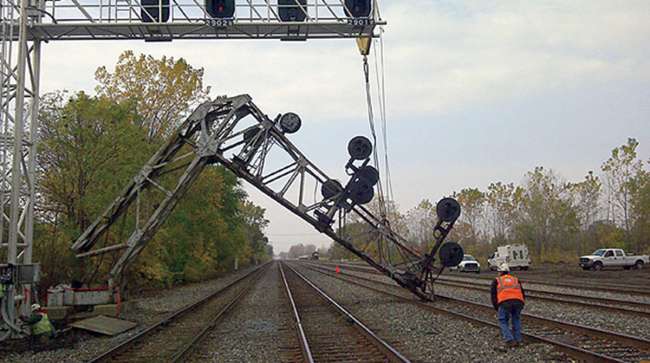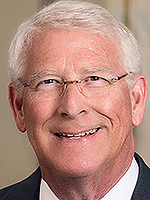Senior Reporter
Railroads’ PTC Implementation Progressing, FRA Announces

[Stay on top of transportation news: Get TTNews in your inbox.]
Rail operators’ implementation of automatic braking technology continues to show progress, federal regulators announced this week.
Positive train control systems were in operation on about 50,300 of nearly 58,000 route miles required by Congress as of June 30, according to the Federal Railroad Administration. The implementation was a 4% increase since the first quarter of the year.
The railroads subject to the mandate must finalize the technology’s implementation by Dec. 31, 2020.
“FRA is determined to help all affected railroads successfully satisfy the statutory deadline for full PTC system installation, testing, certification and ultimately initiate operations governed by PTC on all required territories,” Ronald Batory, FRA administrator, said Sept. 9. “FRA is currently directing its focus and resources on the technical challenges facing the railroads, including commencing revenue service demonstration, interoperability testing and safety plans.”

Batory
Last month, the agency announced the availability of more than $244 million in grants for projects aimed at PTC, congestion reduction, highway-rail grade crossing improvements, upgrades to freight infrastructure, intercity passenger rail operation enhancements and advancements in safety technology, such as rail integrity inspection systems.
Freight and passenger rail operators must apply by Oct. 18. The funding opportunity is part of the Consolidated Rail Infrastructure and Safety Improvements program.
“The [CRISI] grant program is an important resource for railroads to upgrade infrastructure and for communities to enhance safety on tracks and at railroad crossings,” Transportation Secretary Elaine Chao said.
In July, Batory appeared before the Senate Commerce Committee to share the agency’s tracking of the PTC system’s implementation. The panel oversees freight regulations.
“FRA will continue to perform comprehensive oversight, provide extensive technical assistance to all applicable host railroads and tenant railroads, and hold each railroad accountable for the timely implementation of an interoperable PTC system on all main lines subject to the statutory mandate,” the administrator said in his written remarks.
Sen. Roger Wicker (R-Miss.), chairman of the Commerce Committee, highlighted the technology’s potential for improving safety and placed a focus on interoperability across the industry.

Wicker
“Full PTC implementation requires, among other things, that railroads be interoperable or, in other words, they must be able to operate seamlessly across tracks owned by different railroads,” the chairman said. “Achieving interoperability requires coordination across the rail industry, including between the Federal Railroad Administration, host railroads, tenant railroads, vendors and suppliers, and other stakeholders.”
“It’s unacceptable that in the year of 2019 we still have not fully implemented this important safety,” added committee ranking Democrat Maria Cantwell of Washington. “Implementing PTC is truly a major step forward for safety, and I know it has been a long time coming to get where we are today.”
WANT MORE NEWS? Listen to today's Daily Briefing
The Association of American Railroads has indicated freight railroads are positioned to meet Congress’ statutory deadline. As the group noted, “Widespread deployment of new technologies like positive train control, designed to address human error, will open the door to an exciting new era of safety and efficiency improvement for U.S. freight railroads.”
The Government Accountability Office emphasized in a recent report that testing the technology is a key step for achieving implementation. Through laboratory and field testing, as well as revenue service demonstration (RSD), railroads need to show PTC systems are functional. For RSD testing, railroads operate PTC-equipped trains under certain conditions. According to GAO: “Interoperability is achieved when the locomotives of any host railroad and tenant railroad operating over the same track segment can successfully communicate with and respond to the other railroad’s PTC system, allowing uninterrupted movements over property boundaries.”

